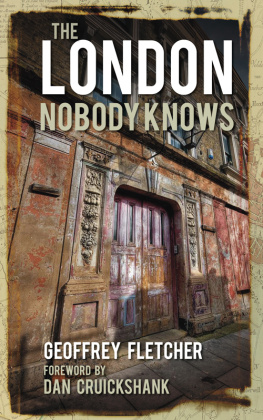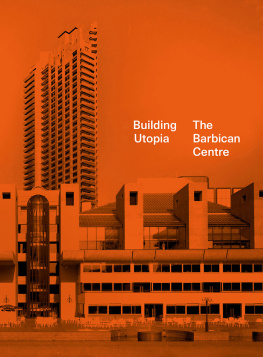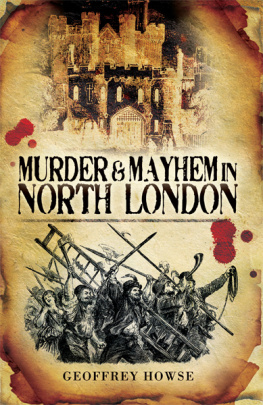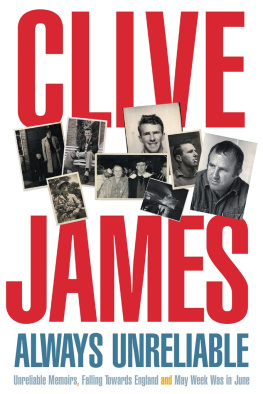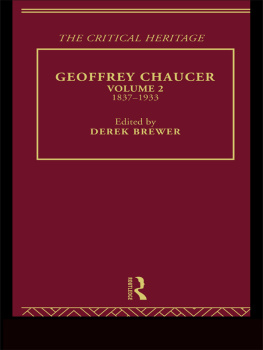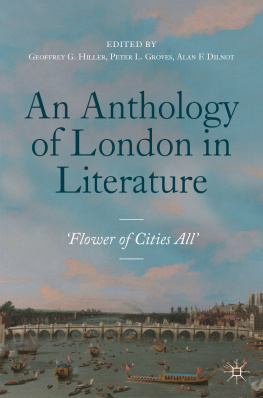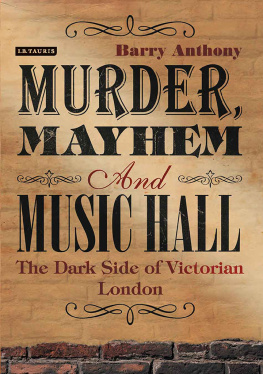
Contents

By Dan Cruickshank
This splendid and most evocative book offers a window into a world of fifty years ago. In many ways it is a lost world. The book records not only London buildings and places that have gone, but also lost ways of life.
Among the most obvious things to have been lost are the once common and everyday details of Londons streets such as the ornate Victorian lamp post and drinking trough Geoffrey Fletcher drew in Islington and the now almost forgotten communities that once gave the city such individual relish, character and vitality. Particularly memorable and moving is Fletchers vivid description of the Jewish community in and around Whitechapel Road long established in the 1960s and now, by one of those strange ironies of history, almost completely replaced by an equally vibrant Muslim Bangladeshi community: This is the place to study the Jewish Butchers and poulterers, observed Fletcher, often established in crazy old close-smelling shops [that] sell Jewish candlesticks, Old Testaments, the Talmud, the Psalms of David and Songs of Zion (p. 84).
Also lost since Fletchers time is, in some way, Londons innocence. Scanning his drawings and reading his text its easy to see that Londons honest eccentricities have been the major victims during the last half century, replaced by chain-retailers and bland, placeless and often cynical international design. Fletcher was a lover of the odd nooks, crannies and the overlooked by-ways of London. As he proclaimed: I have a liking for the tawdry, extravagant and eccentric the whimsical (p.8, 1962 edition). And it is this London that has largely gone.
Fletchers taste for the tawdry and the whimsical of forgotten London was not unique at the time. John Betjeman was also in the early 1960s exploring these aspects of London and its life. And these two men make an odd, and in many ways complimentary and intriguing couple. Both were astute observers and commentators. Betjeman was remarkable because he campaigned in a vigorous and inventive manner to save what was generally deemed to be (and often tragically proved to be) un-saveable such as the Euston Arch and the splendid Coal Exchange in the City of London, both demolished in 1962. Betjeman expressed his stirred emotions and passions through verse, Fletcher through drawings. But, although similar in many ways, the two men were also very different. Fletcher was more fatalistic. He hated the way London was changing but seems to have accepted the notion of progress which was very much the tone of the early 60s believed that remorseless rebuilding was inevitable and that it was not his business to attempt to stop the juggernaut, no matter how rueful and distressing its progress might be. As Fletcher admitted: the newer developments in London the road widening schemes [are] out of sympathy Motor traffic is destroying London. Such considerations are not, however, the purpose of this book (pp.1213, 1962 edition).
This, as London was being torn apart in the name of modernisation, now seems a strange position for a historically minded self-proclaimed London obsessive to take. But Fletcher was certainly an unusual character. He was not a leading light in campaigning organisations such as the Georgian Group or Victorian Society. He was an un-clubable character and in that sense the opposite of Betjeman and something of an outsider who kept himself to himself; significantly he requested that no revealing obituaries should be published after his death.
Fletcher was content to document the odd, idiosyncratic, obscure and changing city the London nobody knew through his drawings, newspaper articles and numerous books. To be sure he mourned the passing of so much of Londons character, but in a way that sometimes seems peculiarly detached. Indeed, he possessed something of the persona of a traveller in a foreign land looking, appreciating, recording but not participating, not actively battling to save those things he loved that he knew were threatened with obliteration.
The story of the Euston Arch offers a good example of Fletchers attitude to his subject matter. As he was making his drawings for The London Nobody Knows, the mighty and majestic arch along with the rest of Euston Station stood under sentence of imminent demolition. Completed in 1838 and the first great monument of the railway age, the arch became the focus of the still nascent conservation movement with not only Betjeman, but also Sir John Summerson and modernist architects such as Peter and Alison Smithson fighting a finally futile last-ditch battle to save it from the philistinism of British Railways and the then Tory Government. Fletchers role in this epic drama was strangely anomalous. A detail of Eustons Great Hall, Board Room and shed roof appeared on the dust jacket of the 1962 edition of The London Nobody Knows and so were evidently emblematic buildings for Fletcher. Yet inside the book, while praising the terminus in romantic manner, he also accepted its imminent demise. Fletchers book was no clarion call to arms. He simply observed that the demolition of the great arch, and the Great Hall, whether they are preserved elsewhere or not, will be a national loss, with the disappearance of Euston being a symbol of the end of the great railway age (p. 34).
Fletcher revealed the purpose that he hoped The London Nobody Knows would play within the maelstrom of early 60s London in the last couple of pages of the book. After regretting the approaching demolition of Rosa Lewiss far-famed Cavendish Hotel in St Jamess no doubt to be replaced by some Grand Babylon Hotel (the replacement building was in fact far worse than Fletcher could ever have imagined) he expressed his fatalistic view of Londons future: most of the things in this book are destined to go in a London that has become the prey of bureaucrats, developers and destroyers; today the whip, tomorrow the scorpion. Off-beat London is hopelessly out of date, and it simply does not pay. I hope, therefore, this book will be a stimulus to explore the undervalued parts of London before it is too late, before it vanishes as if it had never been (pp. 1234). It now seems odd that Fletcher did not see another purpose for his book not just to stimulate people to look before all was lost but also to fight to save what was left.
If all but overwhelmed by the brash, modernising spirit of the early 60s, it must be said that Fletcher played a most important role. As a chronicler of humble London of the 1950s and 1960s the old London [that] was essentially a domestic city never a grandiose or bombastic one (p. 124) he created through his well-observed drawings a precious record of a city in transition. In the process of his urban ambles he documented things that no one else bothered to record and, with his inquiring eye, captured extraordinary vignettes of the capital, painted intriguing portraits of its transient nature and captured moments that would, without him, be forever lost to history.
I have no hesitation in admitting that the older I get the more London becomes an obsession with me, so much so that I find myself ill at ease elsewhere, a feeling familiar to Dr Johnson. It is a good thing, I think, for artists to have an obsession; more than one, indeed, provided that they can all be pursued. The obsession often supplies the driving force for unusual results. Turner, with his preoccupation with light, is a familiar example. Samuel Palmer, in the Shoreham years, was another. The intensity of the Pre-Raphaelites gave a special feverish poetry even to their hangers-on and imitators. Then there was John Martin, a second-rate artist touched for a moment by a weird genius, Fuseli; and Toulouse-Lautrec whose special obsession was the life of Montmartre. Each had his particular
Next page
